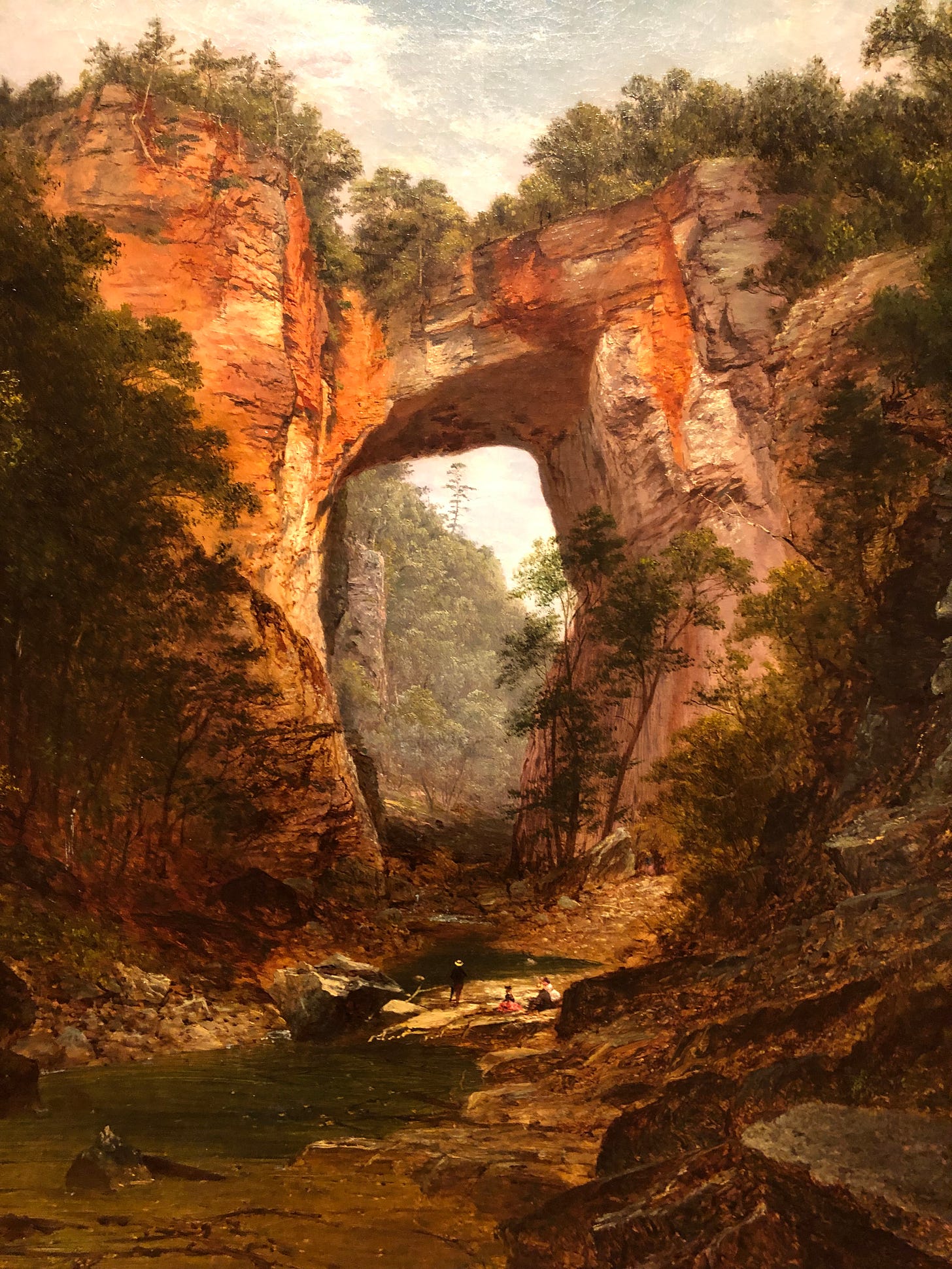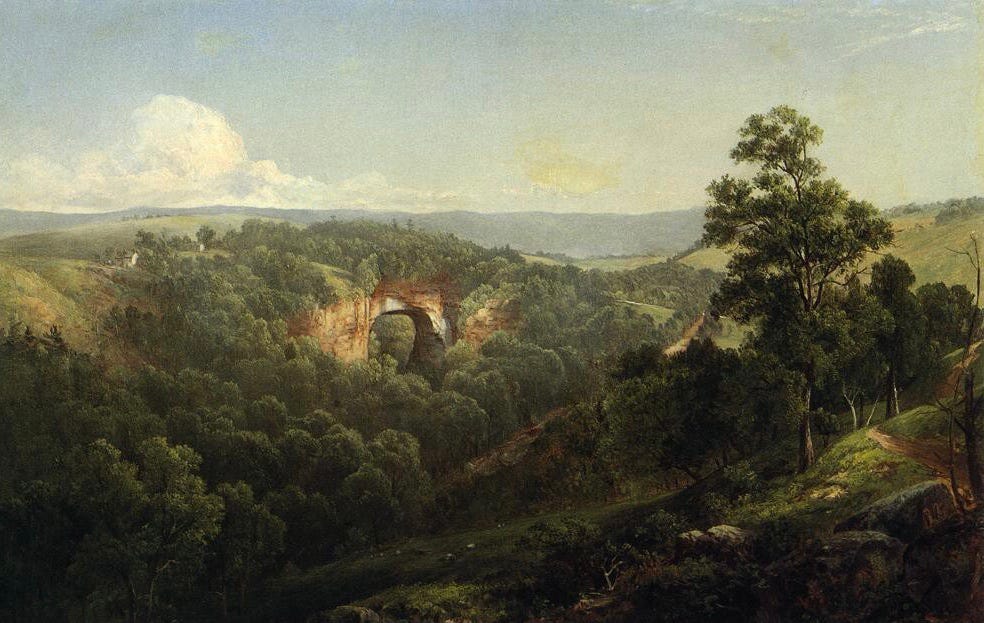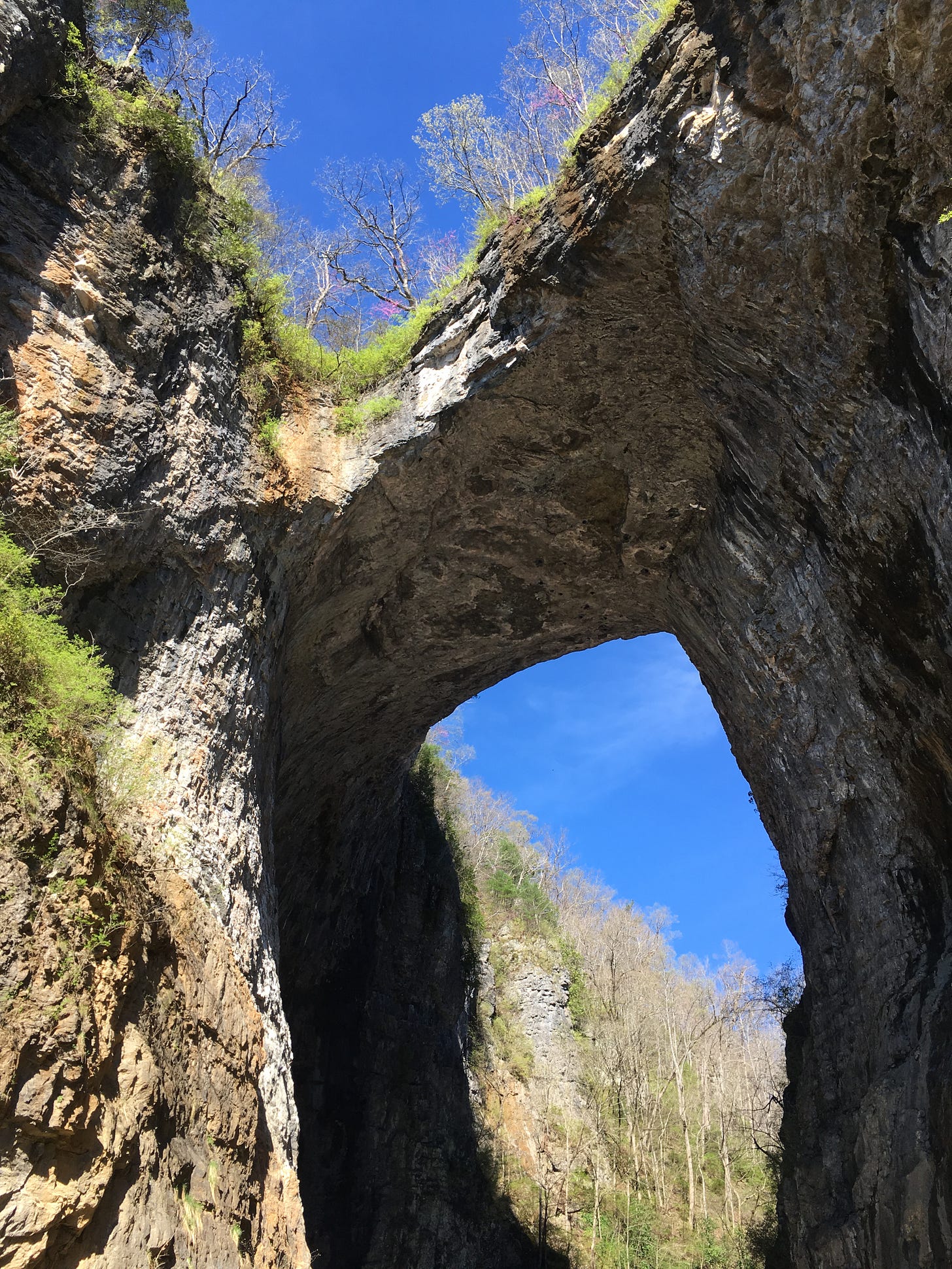David Johnson’s Painting of the Natural Bridge, 1860, Oil on Canvas
I was standing in the American Art section of the Virginia Museum of Fine Arts admiring one of David Johnson’s captures of MOHOMONY. I became aware of two people also admiring the painting so we spoke. One had not visited the Natural Bridge at all. The other, many years ago. They seemed curious about the bridge. They were next to me, and I joined in their conversation about it. “I live close to it.” I said. “Do you visit it often?, the lady asked. We remarked on how Thomas Jefferson had once owned it and was captured by its sublimity. George Washington surveyed the area and possibly carved his initials into the rock under the arch.
“Do you know the Monocan story of it?” I asked. They had not, so I asked if they would like to hear it. They were genuinely fascinated by the prospect of hearing it, so once again I told the story repeated below.
David Johnson (1827 - 1908) was largely self-taught, and was elected to the National Academy of Design. He is best known for his smooth textured Luminist paintings, though he later departed from that style. In 1860 the artist visited Natural Bridge and made a number of sketches, which he later developed as paintings in his New York Studio.
Another view of the Natural Bridge by David Johnson.
He was following in the footsteps of Frederic Church, an earlier Hudson River School painter, who had earlier discovered the Natural Bridge. Both painters captured the bridge with a sense of reverence. They were not the first people to wonder at it. It was already deep in the tales and memory of the indigenous people of the region.
The Story of MOHOMONY
My Painting of MOHOMONY.
Amazing Story of Deliverance in Monacan Heritage
Running desperately through the forest, the small band of Monacan men, women and children were vastly outnumbered by their pursuers. Powhatan warriers were overtaking them. Suddenly they came to the edge of a vast chasm! They could see no way to cross it.
They closed their eyes and prayed. Then they looked up and saw the formation we know today as Natural Bridge, one of Virginia's most unique wonders, spanning the chasm. Hurrying their women and children across the stone span, they followed. Then they turned to make their stand. The much larger army was constricted by the narrow bridge and could only attack the Monacans in a much smaller number. The bridge became a great equalizer between the two forces and the Monacans were victorious that day.
Passed from generation to generation, the story of Monacan survival has made Natural Bridge a sacred place to the Monacans. They named it Mohomony, meaning 'Bridge of God."
Today a recreated Monacan village stands at the base of the bridge. Because the story predates written accounts, it is easy to dismiss it as legend, yet as we considered it my wife said: "I believe it recounts an actual event." The strategic element inherent in the story (the narrow bridge equalizing the battle) is too much like something another Rockbridge County resident, Thomas Jackson, would want to remember.
Like Homer's accounts of the Trojan War and the Odyssey home, some unknown Monacan warrier seems to have recounted this amazing story, remembering the time when geography aided them in battle. I walked across the bridge on route 11, imagining an epic battle like something out of Tolkien (like Gandalf facing the Balrog)!Young Monacans standing shoulder to shoulder to protect children and wives from an overwhelming enemy, who prevailed that day, passed the story to their children.
It just seemed to me like one of many grand moments in history where the unseen hand of God was seen as deliverer.
Photo by Bob Kirchman






